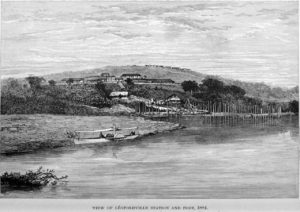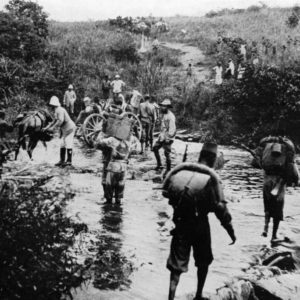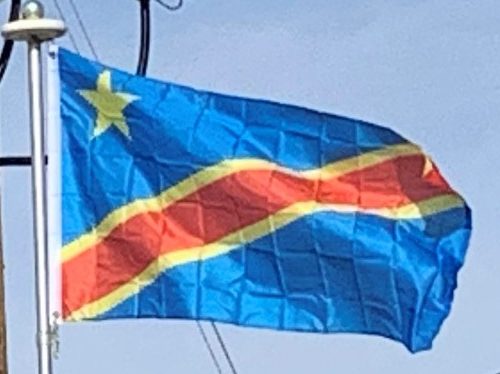In the Free State, colonists coerced the local population into producing rubber, for which the spread of automobiles and development of rubber tires created a growing international market. Rubber sales made a fortune for Leopold, who built several buildings in Brussels and Ostend to honor himself and his country. To enforce the rubber quotas, the army, the Force Publique, was called in and made the practice of cutting off the limbs of the natives a matter of policy.

During the period of 1885–1908, millions of Congolese died as a consequence of exploitation and disease. In some areas the population declined dramatically – it has been estimated that sleeping sickness and smallpox killed nearly half the population in the areas surrounding the lower Congo River.
News of the abuses began to circulate. In 1904, the British consul at Boma in the Congo, Roger Casement was instructed by the British government to investigate. His report, called the Casement Report, confirmed the accusations of humanitarian abuses. The Belgian Parliament forced Leopold II to set up an independent commission of inquiry. Its findings confirmed Casement’s report of abuses, concluding that the population of the Congo had been “reduced by half” during this period. Determining precisely how many people died is impossible, as no accurate records exist.
Belgian Congo (1908–60):
In 1908, the Belgian parliament, in spite of initial reluctance, bowed to international pressure (especially from the United Kingdom) and took over the Free State from King Leopold II.
On 18 October 1908, the Belgian parliament voted in favor of annexing the Congo as a Belgian colony. Executive power went to the Belgian minister of colonial affairs, assisted by a Colonial Council. The Belgian parliament exercised legislative authority over the Belgian Congo. In 1926 the colonial capital moved from Boma to Léopoldville, some 300 kilometers (190 mi) further upstream into the interior.
The transition from the Congo Free State to the Belgian Congo was a break but it also featured a large degree of continuity. The last Governor-general of the Congo Free State, Baron Théophile Wahis, remained in office in the Belgian Congo and the majority of Leopold II’s administration with him. Opening up the Congo and its natural and mineral riches to the Belgian economy remained the main motive for colonial expansion – however, other priorities, such as healthcare and basic education, slowly gained in importance.
Colonial administrators ruled the territory and a dual legal system existed (a system of European courts and another one of indigenous courts, tribunaux indigènes). Indigenous courts had only limited powers and remained under the firm control of the colonial administration. Records show that in 1936 728 Belgian administrators ran the colony. The Belgian authorities permitted no political activity in the Congo whatsoever, and the Force Publique, a locally-recruited army under Belgian command, put down any attempts at rebellion.
The Belgian population of the colony increased from 1,928 in 1910 to nearly 89,000 in 1959.

